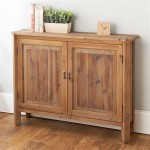Essential Guide to Cleaning Oil from Wood Cabinets
Maintaining pristine wood cabinets enhances both the aesthetics and longevity of your kitchen or living space. However, oil spills and stains are common occurrences that can mar the beauty of these surfaces. Fortunately, with the right cleaning techniques and products, you can effectively remove oil from wood cabinets without damaging them.
Understanding Wood Cabinet Finishes
Before cleaning oil spills, it's crucial to identify the type of finish applied to your wood cabinets. Different finishes require specific cleaning methods to avoid damage.
- Natural (Unfinished): Pure wood without any protective coating. Highly absorbent and prone to staining, requiring cautious cleaning methods.
- Oiled: Treated with oil-based finishes like tung oil, linseed oil, or Danish oil. These finishes enhance water resistance while maintaining the natural wood grain.
- Shellac: A natural resin-based finish that provides a glossy or matte appearance. Shellac is resistant to water and solvents but can be easily scratched.
- Polyurethane: A synthetic, durable finish that creates a protective layer over the wood. Polyurethane is highly water-resistant and can withstand heavy use.
- Lacquer: A fast-drying, solvent-based finish that produces a smooth, glossy surface. Lacquer is water-resistant but can be damaged by heat and harsh chemicals.
Materials You'll Need
- Soft cloths or microfiber towels
- Dish soap or mild detergent
- Baking soda (for natural, oiled, and shellac finishes)
- Mineral spirits or white vinegar (for polyurethane and lacquer finishes)
- Commercial wood cleaner (optional)
Step-by-Step Cleaning Instructions
Natural, Oiled, and Shellac Finishes
1. Blot up excess oil immediately using a soft cloth. Avoid rubbing as this can spread the oil.
2. Create a paste by mixing baking soda with a small amount of water. Apply the paste to the stain and let it sit for 15-20 minutes.
3. Wipe away the paste using a damp cloth.
4. Rinse the area with clean water and dry thoroughly.
Polyurethane and Lacquer Finishes
1. Blot up excess oil as soon as possible.
2. Test a small, inconspicuous area with mineral spirits or white vinegar. If the finish does not react negatively, you can use these solvents to remove the oil.
3. Dip a soft cloth into mineral spirits or white vinegar and gently wipe the stained area.
4. Rinse the area with clean water and dry thoroughly.
Commercial Wood Cleaners
1. Select a commercial wood cleaner specifically designed for the type of finish on your cabinets.
2. Follow the instructions provided on the product label.
3. Rinse the area with clean water and dry thoroughly.
Additional Tips
- Always test cleaning products in an inconspicuous area first to prevent damage.
- Avoid using abrasive cleaners or harsh chemicals that can damage the finish.
- Clean up oil spills promptly to prevent deep staining.
- Use a soft cloth or microfiber towel to avoid scratching the surface.
- If the stain persists or is particularly stubborn, consider consulting a professional cabinet refinisher.

We Tried 5 Methods To Clean Greasy Wood Cabinets And The Winner Is Ridiculously Effective Kitchn

How To Clean Your Wood Cabinets Decorate With Tip And More
:max_bytes(150000):strip_icc()/ways-to-clean-wood-kitchen-cabinets-3017289-00-fb8e5ae9eb004ec6b968f9d53e74cd1e.jpg?strip=all)
Tips For Cleaning Food Grease From Wood Cabinets

3 Ways To Remove Oil From Wood Wikihow

How To Clean Sticky Grease Off Kitchen Cabinets Ovenclean

How To Clean Prep Wood Kitchen Cabinets Before Painting Do Dodson Designs

How To Clean Your Wood Cabinets Decorate With Tip And More

How To Clean Wood Cabinets With Murphy S Oil Soap Helpful Tips

How To Remove Thick Grease From Kitchen Cabinets When Everything Else Fails

3 Ways To Remove Oil From Wood Wikihow
Related Posts








